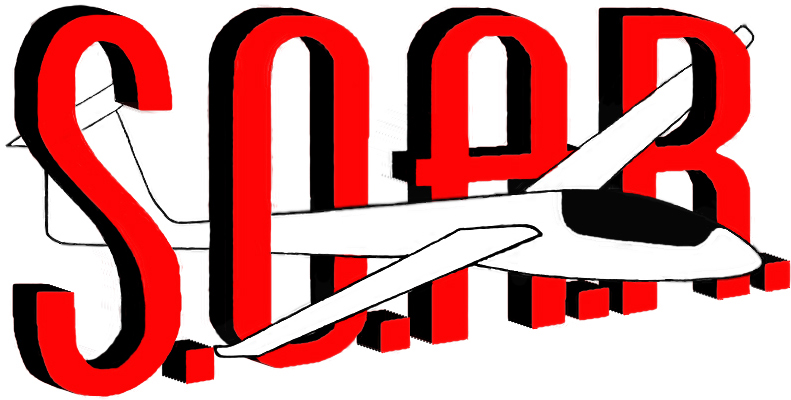Flying in the Wind
Flying in the Wind by Rich Burnoski
A discussion was posted on the RCSE as follows:
I’m heading for a contest this weekend and it looks like it is going to be a howler. Nice weather but wind to 20+ mph. I have flown in this many times but I’ve never gotten the knack for making my time in these conditions. Others do, so there must be a technique or trick. I’m looking for guidance. Should I ballast? (duh.) Should I move the CG? Should I fly reflexed for the whole flight? Would it be better to fly a shorter wing span or a longer wing span? What’s the wisdom from those who relish these conditions?
Here is Rich’s reply…
1). First, if your model is real nose heavy, like 2 ounces or something crazy like that, your not going to penetrate even with ballast. So, to give your self half a chance for extended flight time, the model should be balanced close to neutral with a recovery from a dive that takes about the length of a football field or so, (100yards+) or so .
2).BALLAST: If the thermals are very few and far between, high pressure, or early morning or late evening conditions, ballast is a mistake! It just makes you come down faster. The exception is field slope affect . You might need extra weight to get to a slope or stay in the slope affect area once your model arrives there. Now if there is lift, which is probably 95% of the time, only add enough weight to give your model adequate ground speed to move around the sky,ie. come back from positive air, and come back to the landing circle. This is an important point… know how much weight to add to your plane for the given wind conditions. And not an ounce more than you need. I can easily feel 5 ounces in most any plane in the air but I start at 8 to 10 ounces of ballast. And that will change the planes performance. Special note here: It’s a mistake to ballast with week winches, lightweight line, or crosswind, downwind launching conditions. You have to pay attention to everything!!!
3). REFLEXING: 10% thick airfoils usually need ballast in winds above 10 to 12 mph. OK… so thinner airfoils will penetrate without needing as much ballast. A much better scenario. This is a tricky area because camber has lots to do with penetration too! So in general from my blue collar perspective of flight performance, (I dont design jets); a thick airfoil with low camber is the worst set up . That is the type of airfoil used on power planes. I suggest that an 8% thick, 1.8% camber is close to the perfect airfoil for thermal/wind flying. Could that be a MH-32? yeap,close. So… What airfoil are you using??? Is it close to that??? Simply put… higher camber airfoils need lots of reflexing to just achieve penetration. Once thermals are located and centered, go to a neutral or slight thermal mode. The MH-32 airfoil is one of the few airfoils of the many i’ve flown that doesn’t really need any camber changing for any thermal/wind conditions. Very user friendly! Saying that… there are much better airfoils of course for speed and pure early morning thermalling. I cant get any more specific than the info above because plane design, ballance point and quality radio installation play a major role in the overall levels of performance.
4) Ahhh… The fun wind challenge? The wind is howling right?? Is it lift or is not? If you know your model very well, and the model is setup like I mentioned above, you’ll be able to recognize the model suddenly penetrating, rising, or the tail rising or one half the wing rising. I practice the art of flying my model in heavy winds. I call those straight line winds! The wind of the day. Thermals tend to show themselves when the wind slows down for a short spell depending on the wind speed of the day. Lets call that a thermal cycle. The challenge comes when I first recognize the thermal, positive air, determine if it’s straight in front of my model, behind the model, or is the stronger part of the thermal on the left or right side of the model, then I adjust where I’m flying and heading my model. How big is this thermal? Is it big enough and or strong enough to capture and follow it for extended flight times? Is it a genuine thermal? I measure the thermal by a count. The count, in seconds, would be the size and length of the perceived thermal. I count; “one thousand and one… one thousand and two”, and so on. A one second count to a one and a half second count is generally not enough thermal size for the size models we’re flying. A two to three second count sometimes is all thats needed to core the positive air and gain an advantage in time and win a flight challenge. It takes practice, practice and more practice. I usually stop flying when the winds get to where my plane lands WHEN it wants and WHERE it wants! Short of that I’m flying! Ohhh, theres lots more, just ask. I’d be pleased to answer, as I do lurk the exchange. I only give my input when I’m personally asked.
Otherwise, Thermals to you all,
Richard Burnoski
Chicago S.O.A.R.
